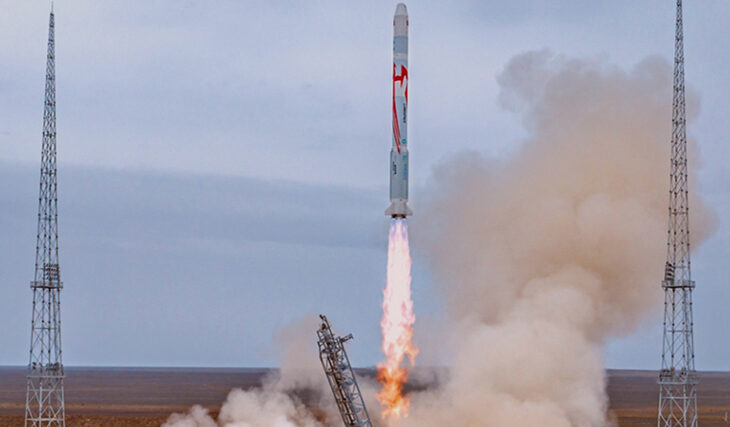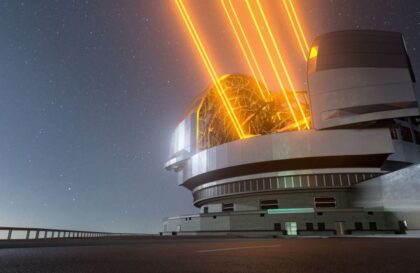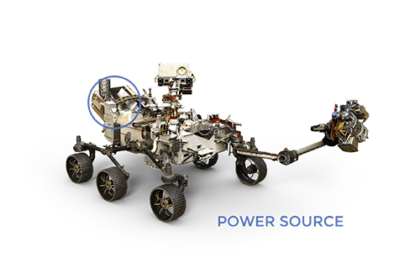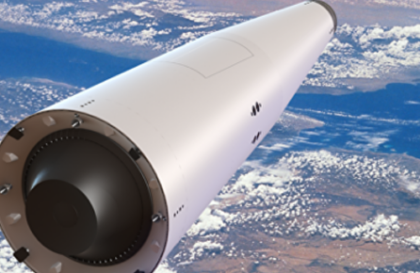July 12, 2023. The world’s first rocket launch with an oxygen-methane engine, Zhuque-2 (ZQ-2), was successful. The rocket took off from the Jiuquan spaceport in northern China.
Zhuque-2 has a diameter of 3.35 meters, a length of 49.5 meters, and weighs 216 tons. It is capable of delivering a payload weighing 4,000 kg (8,800 pounds) to an altitude of about 310 miles (500 km) and 6,000 kg (13,000 pounds) to a height of 120 miles (200 km).
In the future, LandSpace plans to produce up to 15 such rockets annually.
Why methane?
Oxygen-methane engines are being developed for reusable rocket stages, aligning with a global trend to use liquefied natural gas as rocket fuel. Unlike commonly used kerosene-based fuels, methane is cost-effective and benefits from existing industrial infrastructure. It also produces less soot when burned, making engine maintenance easier, and offers good cooling capabilities, albeit with a slightly lower specific impulse than hydrazine engines.
SpaceX’s Starship system uses Raptor engines, fueled by cryogenic liquid methane and oxygen, in its Super Heavy rocket and Starship spacecraft. Elon Musk has stated that the target vacuum-specific impulse for Raptor is 382 s (3750 m/s).
Methane engine company Landspace, Kina
Hydrazine is More Common
The history of hydrazine as a fuel dates back to World War II. At that time, hydrazine was used in German jet fighters like the Messerschmitt Me-163. It is a colorless, highly toxic, and hygroscopic liquid with an unpleasant smell, often used as rocket fuel. Its specific impulse with oxygen is 312.9 seconds. It is hazardous to health, causing symptoms ranging from dizziness and nausea to coma and fatal outcomes.
Today, this fuel is used not only in satellites. Unsymmetrical dimethylhydrazine is employed in most rocket engines, including the Russian Proton-M rocket, as well as in Chinese rockets of the Long March 2 (CZ-2) family and others.
Liquid Hydrogen is More Efficient
Hydrogen, the lightest and most abundant element in the Universe, contains 600 sextillion atoms in just one gram. It can penetrate hard-to-reach areas, especially under extreme temperature and pressure conditions. This characteristic poses challenges in rocket systems that require a high degree of sealing. In rocket systems, fuel lines must maintain a connection with the rocket until the moment of launch.
Space Shuttle launches were often delayed due to leaks of liquid hydrogen in the pipelines during refueling or on board. This issue is related to the high complexity of the system, including solid rocket boosters and main engines that use liquid hydrogen and oxygen.
Hydrogen is a tiny element that can permeate through tiny gaps, especially at high pressures and low temperatures. Achieving reliable sealing is difficult, so NASA allows minor leaks while ensuring the hydrogen concentration does not exceed a safe level of 4%. Due to this complexity, the shuttle was typically scrubbed once for each launch attempt. Some shuttle missions were scrubbed up to five times before finally taking off.
Solid Rocket Fuel
Black powder, one of the oldest forms of rocket fuel, is now used in pyrotechnics. Solid rocket fuel generates a large amount of gas and does not require oxygen for combustion, making it simple and reliable but with low specific impulse and high vibration.
In the launches of American space shuttles, solid rocket boosters were used. Two such devices, each approximately 45.5 meters long and weighing 1,180 tons, provided additional thrust at takeoff. They detached from the shuttle at an altitude of about 45 kilometers and roughly two minutes after launch. After separation, the boosters descended to Earth using parachutes and could be reused after subsequent refueling.
Modern solid rocket fuels are compositions of oxidizers and combustible components. Ammonium, lithium, and potassium perchlorates or potassium or ammonium nitrates are most commonly used as oxidizers. Various metals and their alloys, including aluminum and magnesium, can serve as combustible elements. In addition, the fuel mixture may include various polymers and resins, such as polyethylene, rubber, and bitumen.
The apparent drawbacks of these engines—low specific impulse, difficulties in thrust control and restarting, and high levels of vibration during operation—have limited their application.
Why Don’t Rockets Use Gasoline and Diesel Fuel?
Gasoline and diesel fuel are not used due to their low efficiency. However, Goddard’s rockets and the first Soviet rockets did use gasoline.
Fuel of the Future
Nuclear engines are considered promising for interplanetary travel. According to estimates, a rocket equipped with such an engine could reach Mars in 90 days.
Artist concept of Demonstration for Rocket to Agile Cislunar Operations (DRACO) spacecraft, which will demonstrate a nuclear thermal rocket engine. Nuclear thermal propulsion technology could be used for future NASA crewed missions to Mars.
Credits: DARPA
One of the companies in the USA suggests using liquid hydrogen as the working medium. In this configuration, a nuclear reactor running on uranium generates thermal energy, which then heats up the hydrogen. Upon expansion, this gas provides the necessary thrust for the rocket. Although research in the area of nuclear rocket propulsion has been conducted since the 1950s, there have been no actual launches of such engines to date.
Image credit:
https://www.aex.ru
https://www.landspace.com
https://www.h2-mobile.fr
https://www.nasa.gov






